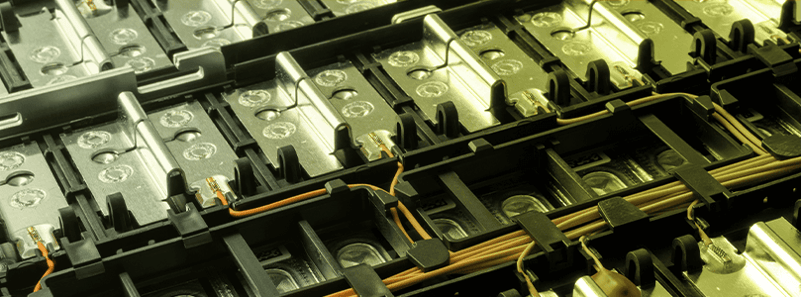Can we meet the new demand?

There is a whole lot of reliance on batteries these days and so much more coming. Consider every single portable device that is available. Next consider how many automotive companies have committed to stop producing internal combustion engines and focusing only on electric vehicles. (Spoiler alert…it’s all of them). We’re going to need more batteries! So, the question becomes, can we manage the demand?
What is a Battery?
The ‘modern’ battery was discovered by Alessandro Volta in 1780 in response to a theory given by Luigi Galvani, another scientist. Galvani pointed out that when you hang frogs’ legs off an iron or brass hook and then poked it with a different type of metal, the legs twitched. He believed this came from electricity running through the legs which he called ‘animal electricity’. It is safe to assume that Volta first thought to himself, “Where did he get those frog's legs?”. Then he followed up that thought with what if the legs don’t create the electricity, but simply carry it from one metal to the other? After many trial runs involving silver, zinc, cloth, etc., he was able to prove it was indeed the metals creating the reaction, and not the delicious legs.
|
A battery is something that stores chemical energy produced by the flow of electrons. It is built upon a system of one or more electrochemical cells. An electrochemical cell consists of two electrodes separated by an electrolyte*. There are 2 types of electrodes, the negative anode where electrons flow to the positive cathode. |
|

An electrolyte* is a solution where an electric current can be carried as a result of the movement of particles with either a positive or negative charge. |
What’s Happening Inside the Battery?
So the magic happens between the cathode and anode, where cathodes and anodes are made up of different electrical conductors such as lithium, zinc, nickel, cobalt and graphite. These conducting materials all have different standard potentials. Those with stronger standard potentials can take electrons from weaker materials. This forms an electrochemical cell, and then used to build batteries. The energy that is being created can then be leveraged through conducting wire.
.png?width=524&name=Image%20of%20an%20Electrochemical%20Cell%20(Battery).png) Source: https://www.science.org.au/curious/technology-future/batteries
Source: https://www.science.org.au/curious/technology-future/batteries
Circling back, there are millions of batteries in different shapes and sizes. The little guy in your phone is not the beast powering your SUV. The materials that are chosen per battery will reflect the application and requirements.
Where are the Batteries at?
With the massive growth in EV, where are these batteries coming from? China is a good place to start, with about 80% of the battery market. That said, it is a very dynamic number, because the competition is so fierce. China has plans to build another 150 battery factories by 2030, but other players are making sure they are in the game. Companies like Tesla (USA), Volkswagen and Mercerdes-Bens (Europe) are planning on manufacturing their own batteries, while others like GM are investing in plants to manufacture battery materials in mining countries like Canada.
Are there Enough Resources?
Lithium, for example is used to manufacture cathodes. Today Chile has the largest lithium reserves in the world, even though Australia is currently the country that produces the most. Bolivia which is also in the running could soon become a major producer of lithium at a lower cost. But is it enough?
In time, there will certainly be a need for more mines keep pace with the market. It is a guarantee that prices will reflect that. Will this affect only automotive, or will this be a common denominator in every industry?
For more information on battery production and quality, please contact Averna.
You may also be interested in…
Looking to produce perfect batteries? See how we helped this household name deliver perfect AAs and AAAs.
Get in touch with our experts or navigate through our resource center.
